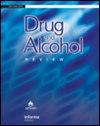Risk communication about high-dose MDMA: Impact of a hypothetical drug alert on future MDMA use
Abstract
Introduction
Despite high-dose 3,4-methylenedioxymethamphetamine (MDMA) drug alerts being distributed, no research has been conducted as to changes in use in response. This study aimed to determine if: (i) high-dose MDMA drug alerts, and (ii) varied descriptions of dose, effects and actions to reduce harm were associated with intentions to reduce the initial MDMA dose in a hypothetical scenario.
Methods
Australians who used MDMA pills/capsules in the past year completed an online survey. Respondents were randomised into alert (n = 441) or control (n = 184) conditions, with the former receiving a high-dose MDMA alert with systematically varied descriptions of dose, effects and actions to reduce harm. Multinomial logistic regressions determined the association between receipt of drug alert (and varying alert content) and hypothetical MDMA dosing.
Results
Almost half (45.4%) of those in any alert condition reported intention to not use (20.7% of control participants) and 46.7% stated they would use and reduce their initial dose (69.0% of control group). Compared to the control group, those who received an alert were significantly more likely to report intention to not use the drug, as compared to taking a smaller initial dose (adjusted relative risk ratio [aRRR] = 3.28, 95% confidence interval [CI] 2.13, 5.07) or taking the same/higher initial dose (aRRR = 2.62, 95% CI 1.31, 5.22). There was no significant association between different alert phrasing and intended behaviour.
Discussion and Conclusions
While there was no significant effect of variation in phrasing, receipt of an alert promoted intended harm reduction behaviours. Future research assessing actual behaviour and different substances (e.g., heroin, methamphetamine) is important to further understand the utility of this public health communication.


 求助内容:
求助内容: 应助结果提醒方式:
应助结果提醒方式:


